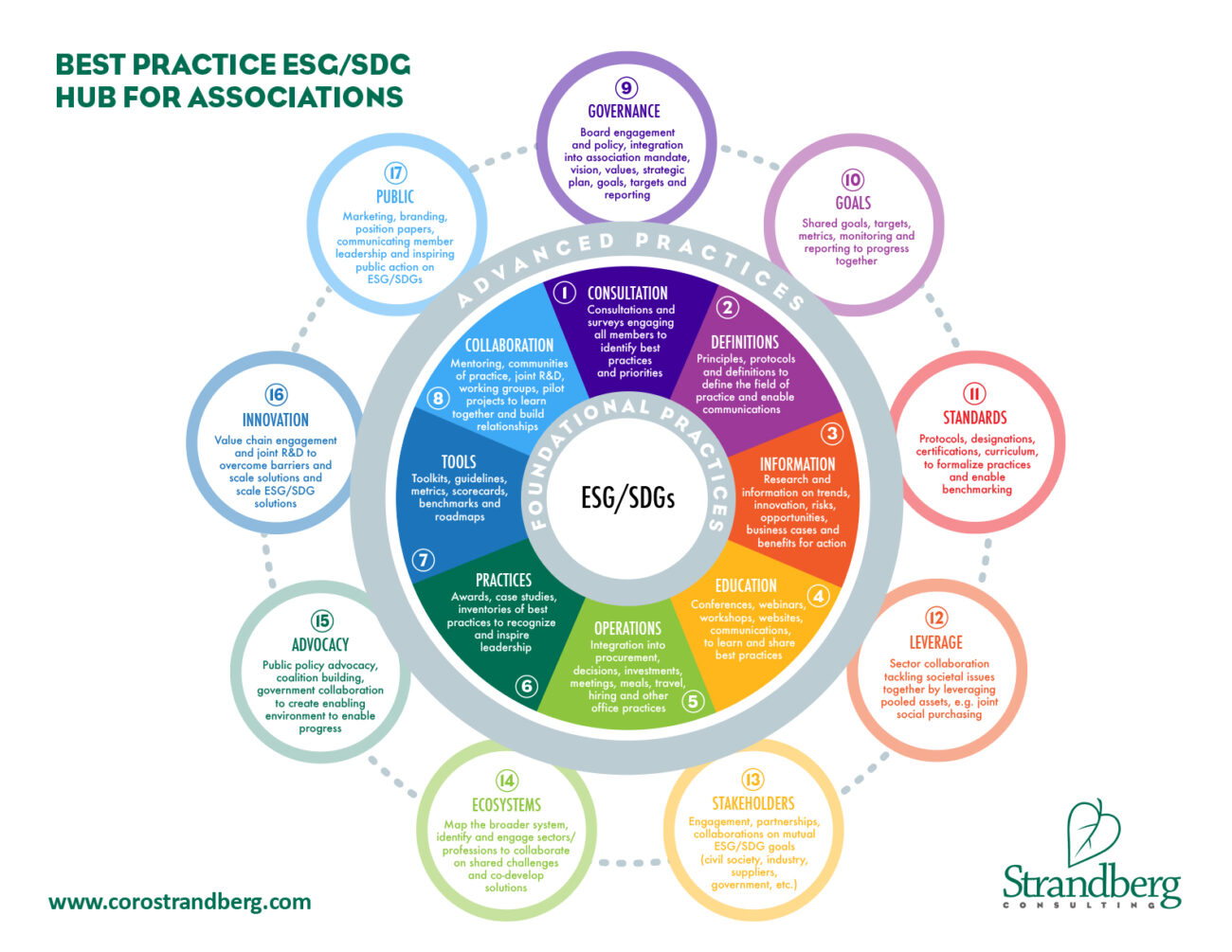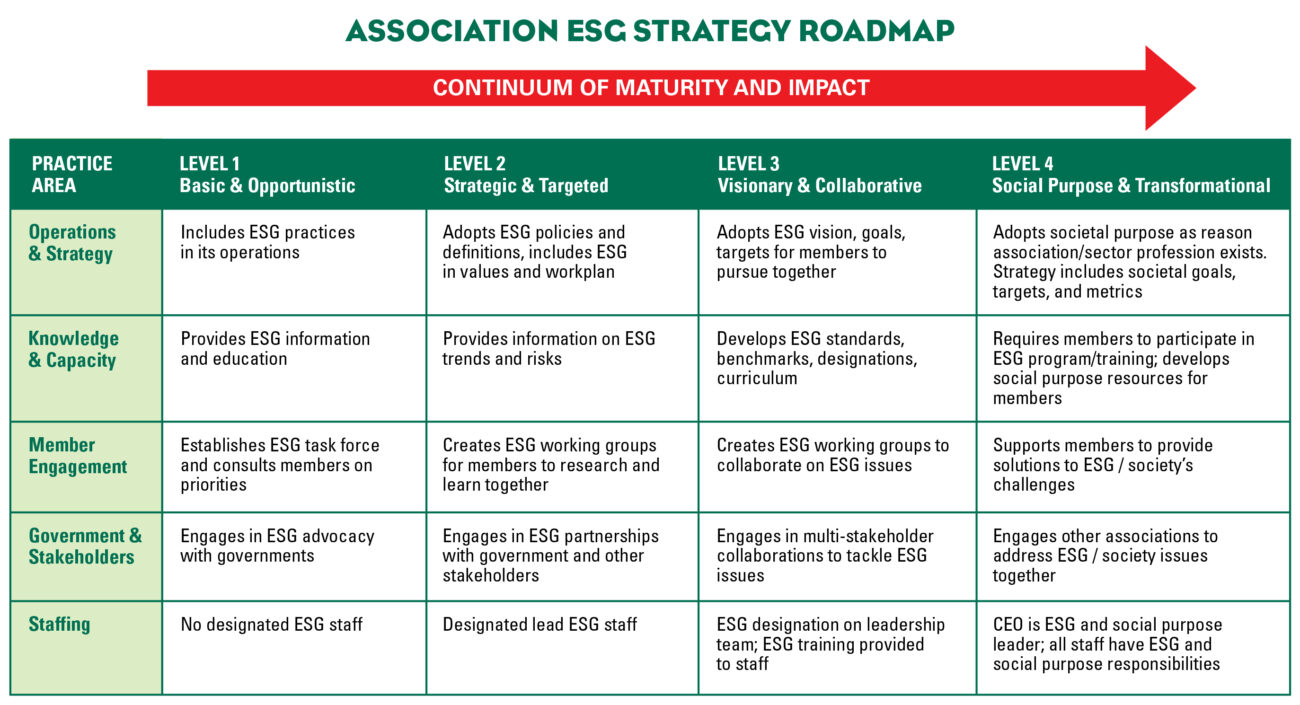The intersecting crises of the pandemic, accelerating climate change, and increasing inequality are driving associations and their members to reinvent themselves for the future. The race is on to re-engineer association mandates and member value propositions to secure their relevance and put humanity on a sustainable footing. These times call for associations to repurpose themselves to serve not just their members but society.
One association responding to the summons is UK Water, whose members are water and wastewater service suppliers in England, Scotland, Wales, and Northern Ireland. Two years ago, the association adopted a Public Interest Commitment to:
- Encourage members to enshrine operating in the public interest within their business purpose (aka become a social purpose company).
- Work together towards achieving a net zero carbon sector, 100 per cent adoption of a Social Mobility Pledge, preventing plastic bottle waste, reducing water leakage, and ending water poverty.
With this announcement, the water industry pledged to go above and beyond the provision of clean, fresh drinking water and effective treatment of used water to deliver wider benefits to society.
Another association committed to supporting its members to be greater forces of good is Colleges and Institutes Canada (CICan), with nearly 150 members across the country. Two years ago, the association adopted a new vision of “better futures for peoples and communities” and a value proposition to be a force multiplier for Canadian colleges and institutes. As documented in this set of seven sustainable association case studies, CICan holistically embraced the United Nations Sustainable Development Goals (SDGs) as its North Star and pivoted its lobbying and programming to do its part to help its members achieve these global goals.
Professional associations, too, are diving into the work. The Canadian Institute of Planners (CIP) adopted policies and roadmaps on climate change, Indigenous reconciliation, equity, diversity and inclusion and healthy communities, providing guidance and tools on the roles its professional members can play in these areas. The association is committed to carbon neutral operations, and collaborates with allied professions on climate action, using its voice with government to lobby for climate leadership. It requires its professionals to demonstrate sustainable development, equity, diversity and inclusion, and Indigenous relations competencies.
Coro Strandberg is President of Strandberg Consulting, based in Vancouver, Canada. She has 30 years’ experience advising governments, businesses and associations on strategies to leverage the market as a force for good. Coro is a nationally recognized Canadian thought leader on the future of business, sectors, professions and associations in society. The Canadian Government frequently commissions Coro to write on these topics. She is a faculty member for Governance Professionals of Canada and Directors College providing training on Sustainability and Purpose Governance to directors and governance professionals. She is a co-founder of the Social Purpose Institute at United Way which helps businesses develop and implement a social purpose as the reason they exist. Coro is a member of the Canadian Office of the Auditor General and the Canadian Standards Association advisory panels. She publishes her thought leadership on her website at www.corostrandberg.com.
Some associations make adoption of their sustainability program a condition of membership, and expect members to transparently disclose their sustainability performance, such as the Mining Association of Canada (MAC). As documented in the case study report of seven sustainable associations, MAC requires its members to endorse Towards Sustainable Mining Principles, and report on a set of social and environmental performance metrics to enable peer benchmarking and continuous improvement. It has a target that its members have the highest performance levels in the program, and it collaborates with industries around the world such as steel and jewelry for aligned sustainability programs. Its own program has been adopted by seven other national mining associations, transporting the Canadian mining brand around the world. The association champions the transition to the low carbon economy, and the role its members are playing to enable it.
More and more associations are stepping up to help their members make – and hasten – the transition to the low carbon, circular and equitable economy. Another is the Association of Flemish Cities and Municipalities. It works with local authorities to translate the SDGs at the local level, offering promotional materials and tools and practical examples. It published a guide to integrate the Global Goals into municipal policy plans and encourages municipal councils to put sustainability at the heart of their organization with the guide.
As associations emerge from the global pandemic and seek to build relevance, they become more interested in futureproofing themselves and their members by embracing societal missions and creating sustainability blueprints for their sectors and professions. Some refer to their transformation as “social or public purpose”, others as “ESG” (Environmental, Social and Governance) and others as “sustainability”. Regardless of what associations call it, the rising interest of sectors and professions to play a stronger societal role is indisputable. At a recent discussion on the topic, association professionals commented:
“Our historical mission has been to develop and defend markets for our product. Is this the game we should be in anymore?”
“We are looking to transition to become an ESG-focused organization.”
“We have been focused on environmental regulatory compliance. We want to be more proactive.”
Evidence shows that the top driver of the shift is maintaining relevance to members and stakeholders. Other drivers include:
- Attracting, retaining and engaging members
- Attracting, retaining and engaging employees
- Showing sector / profession leadership
Anecdotally, association executives report their sustainability programs attract new members (in one case, a 30 per cent increase), and that their younger employees are agitating for greater leadership in this area. Other associations observe that improved member ESG practices give associations more credibility with government when lobbying for their sector.
How to build a sustainability, SDG or ESG program to help members succeed?
But how to get started or advance? Some associations feel in the dark about the steps to take to help their members transition to the low-carbon, circular, regenerative, diverse, equitable, and purpose-driven economy. The Canadian government commissioned this research paper to shed light on this pivot. It began with the question:
“How to unlock the potential of sectors and professions to become forces for greater good in society”
… and answered by developing two tools for associations to help their members accelerate a just and sustainable future.
What’s next on the ESG radar?
Check out this Canadian government-commissioned resource on The Future of Business in Society. It is a roundup of thought leader views from across the globe on what corporate leadership looks like in the 21st century. Link to report.
ESG / SDG Association Hub
The first tool, the ESG / SDG hub for associations, depicted below, sets out 17 practice areas, from consultation to public engagement. The 17 practices are divided into foundational and advanced actions. The internal practices are basic, easy wins, and necessary to have in place to get to the other, external, practices.
The innermost circle is directed at ESG and the SDGs (ESG/SDGs). An association can replace this with the term relevant to their sector or profession, such as sustainability, social purpose, social impact, or corporate social responsibility. The hub can be applied to both a suite of ESG topics, or to a single ESG topic, like climate change or diversity. In other words, associations can put any topic in the centre of the rubric to guide their ESG approach.
Associations can use the hub as a benchmark tool to identify achievements and prioritize gaps to fill. It can be used by boards for strategic planning. Once the organization has prioritized its efforts, it can add them to its strategic or operational plan.
The hub can be used:
- As a blueprint to guide an association’s approach and figure out what to do next. It can be a starting point for conversations.
- To have conversations with members, especially in areas that are conflicted and where some members are ahead or behind. It can help identify where members are comfortable to move forward and determine where there is consensus.
- To think about the cumulative impact all members can make. For example, how might associations use their role to influence their members? This is where associations could focus on the outer parts of the circle: advocacy, public education, etc.
For associations that would like a tool to benchmark their practices, here is a resource that can help identify gaps and opportunities, linked to the best practice hub.

Association ESG / SDG strategy roadmap
The second tool, the association ESG strategy roadmap, is a complementary resource for organizational leaders to assess their organization’s current state and determine how far they would like to advance on ESG in the future. The roadmap captures a continuum of practices: from basic and opportunistic, to strategic and targeted, then visionary and collaborative, and finally, to the social purpose and transformational stage. Each is equated to a level – one through four – enabling organizations to better envision how far they would like to advance in the maturity model.
As with the previous tool, this framework can be used by associations and their boards to determine their strategic approach. They can use it to decide where they want to be, how much more they want to do, and what they should put into their strategic plan to advance their progress.
Many associations will want to skip to level four, becoming social purpose and transformational as they reboot themselves and their sector or profession for the times ahead.

Society is at an inflection point, and associations are poised to play a strengthened role in helping their members contribute to accelerated social good. In so doing, the sectors, industries, and professions that make the economy tick will be put on a more viable path for one and all. The association management profession can – and must – heed the call and lead the way.
Resources
Sustainable and Just Association Report: https://corostrandberg.com/wp-content/uploads/2021/02/sustainable-association-report.pdf
Sustainable Association Case Studies: https://corostrandberg.com/publication/sustainable-association-case-studies/
Association Sustainability Benchmark: https://corostrandberg.com/publication/sustainable-and-just-association-benchmark/
Climate Change Guide for Associations: https://www.bccic.ca/climateguide/
